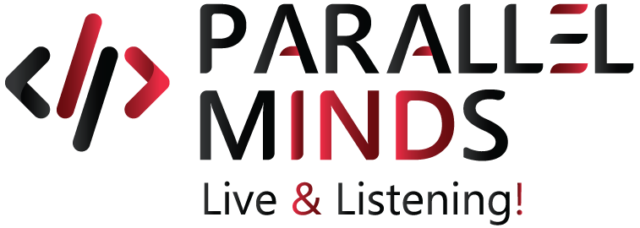Demand Forecasting Platforms — Amplifying Your Mid-Sized Company’s Growth Strategy
Table of Contents
If managing your mid-sized company’s inventory is still a guessing game, you’ve probably been too busy managing other aspects of your business to save your forecasting strategy from the dark ages.
Under the circumstances, your business is far from accurately predicting your customers’ specific requirements, which means some shelves in your warehouses are running empty because they’ve been sold out and others are overflowing with surplus stock.
On the one hand, you have a line of customer orders to be fulfilled with no products to ship. On the other, you have surplus stock that hasn’t moved an inch due to a drastic drop in demand. Your spreadsheets have been of no help, and all you can do is tide over the mess and hope your instincts and your team’s manual forecasts work better the next time.
Well, if this nightmare situation sounds like one you’ve recently faced in your mid-sized company, or if it is one you smartly wish to avoid with careful planning, here we are to tell you why a demand forecasting platform is the answer.
Limitations of Manual Forecasting: A Case Against Spreadsheets
There’s no denying the role spreadsheets have played in business decision-making over the years. Despite their error-prone and time-consuming habits, the announcement of a spreadsheet update was all that was required to sum up a forecasting effort. The list of shortcomings, however, kept getting longer.
Let’s dive into the specifics!
Time
Manual forecasts require teams to chase down data from various departments, update spreadsheets, consolidate reams of data, run calculations and check for anomalies, and redo parts of the entire process until they reach a point where a decision has to be made, irrespective of the quality of data at hand. Understandably, the entire cycle turns out to be a heavy lifting effort than a smart and quick decision-making one.
Human Error
In the highly complex world of manual forecasting where vast datasets are involved, even a minor typo snowballed into a serious inaccuracy. With no way to identify these errors in time, it was often only after decisions went haywire that these often fatigue-induced inaccuracies even came to the fore. Soon enough, it becomes clear that it would be impractical to ignore these costly mistakes and depend on fallible human efforts alone.
Scalability
As a business grows, the data deluge becomes increasingly complicated to handle, making the volumes and complexities of spreadsheet information no less than a nightmare. It is soon clear your spreadsheet strategy is no longer working out. The only option is to begin to choose more important patterns and forecasts, thus leaving you with fewer insights each time. Translating to missed opportunities, slower expansion, and inaccurate decisions, the adverse results are soon obvious.
Missing Pieces
Manual forecasting never presents the complete picture, and missing out on dynamic factors is a serious flaw it has failed to overcome. Since relying on historical sales data is no longer enough, the tunnel vision it offers leaves out essential projections connected to changing market trends, competitor overhauls and shifts, seasonal changes, economic influences, and social media impact. These blind spots translate to incorrect forecasts and missed opportunities, all arising from misinformed decisions.
Decision Delays
In a business environment where agility is key, manual forecasting via spreadsheets no longer offers the insights you need to keep up with real-time shifts and changes. Pivoting quickly is close to impossible with your data still caught up in time-consuming processes, and even keeping up with the competition seems like a lost cause. These result in slow reactions, let alone proactive decisions, and eventually cost the business missed opportunities as well as losses due to lethargy.
With the growing complexities in business, companies relaying on traditional spreadsheets and manual forecasting soon began to realize that no matter how many updates they introduced to these processes, their ability to handle complex data often fell short, and at the cost of speed and accuracy too.
How a Demand Forecasting Platform Transforms a Mid-Sized Business
Demand forecasting offers a mid-sized business strategic advantages that include agility, comprehensive overviews, accuracy, and smarter insights, all contributing to its ability to make data-driven decision that are timely, proactive, and impactful.
Unmatched Precision
Demand forecasting platforms harness a comprehensive array of variables and access hidden patterns and data, even surfing through historical data, market conditions, and sales numbers, before delivering forecasts. They quickly adapt to shifts and changes in real-time, accounting for every influential component while crunching the numbers to accurately predict demand. This mix of continuous learning to offer added precision enables a business to make informed decisions that are based on comprehensive and acute analysis of a holistic list of indicators.
Self-Sustaining Efficiency
Tasks like gathering data on current market conditions, trending social media posts, shifts initiated by the competition, and then crunching these numbers were tedious ones for manual teams. The delays, inaccuracies, and inconsistencies were understandable. Modern demand forecasting platforms take on all these tasks and more, even sustaining its efficiency without the need for human intervention. With inbuilt problem-solving and machine learning abilities driving their functions, these platforms are as autonomous as they are impactful.
Dynamic Machine Learning
Manual forecasting heavily relied on human intervention to introduce improvements and a spreadsheet was simply extensions of the creativity and intelligence of the human mind that managed it. Today’s demand forecasting platforms leverage the power of machine learning to grow more accurate and refined on their own, constantly taking in new data and responding to external shifting patterns with equally swift adaptations. This dynamic approach enables these platforms to stay ahead of the curve at all times, offering the same advantages to a business.
Seamless Integration
Forecasting platforms seamlessly integrate with an existing digital ecosystem, enabling a business to add their CRM, ERP, and other data to the platform and create a unified data landscape that makes the entire decision-making process a lot less complicated. More than just a technological effort, this effortless merging of functionalities into a multipurpose dashboard ensures that every piece of data in your existing ecosystem now finds a place in a sophisticated yet highly efficient forecasting environment.
Deep Data Discoveries
While manual forecasting efforts barely skimmed the surface, demand forecasting platforms dive deep into your data, unearthing hidden trends as well as anomalies, and creating a panoramic view of filled with comprehensive insights and business optimization scenarios. Powerful analytics then enables the projection of correlations and interconnected patterns, creating intrinsic visualizations and compelling narratives based on opportunities as well as gaps.
Scenario Analysis
Going beyond forecasting, these platforms simulate scenarios to enable a business arrive at decisions and strategies with confidence. They can easily model the outcomes of multiple scenarios, showing business just how certain trends will play out in different market conditions. They include both macro and micro influences, do more than just lead you to predictions; they also pave the path to optimal patterns and realistic visualizations while simulating additional scenarios to present a comprehensive overview.
Data-Driven Empowerment
Moving well beyond gut instincts and historical decision-making, businesses can now drive their growth and precision-induced strategies with every data insight and forecasting scenario well accounted for by a highly dependable and accurate tech-driven platform. Mid-sized companies thrive on agile, informed choices, and this data-driven empowerment a demand forecasting platform offers is undeniably a strong and influential catalyst.
Proactive Power
When it’s all about predicting the future, every shift and pattern needs to be analyzed carefully to complete all possible visualizations of potential scenarios while also providing you with the opportunity to stay agile. Demand forecasting platforms accomplish these goals and more, offering businesses the chance to latch on to emerging opportunities while handling huge amounts of data to cover every component from your inventory and marketing to pricing and competition to arrive at decisions that are already ahead of the curve.
The Parallel Minds Strategy
At Parallel Minds, we leverage every advantage of a demand forecasting platform to transform your business into a proactive, agile, and data-driven powerhouse. With us on your side, you no longer depend on aging spreadsheets and critical delays. Our team, while highlighting key advantages of each technology, also build for a customized platform that aligns perfectly with your digital ecosystem and business outlook.
Share:
More Posts

Value Stream Mapping – Current and Future States
If you’ve ever witnessed a brilliant idea with the potential to develop into a successful

The Digital Evolution of a Lean Manufacturing Ecosystem: The Turnaround from Waste to Profit
As leaders in the tech space, we owe it to our respective industries to revolutionize


